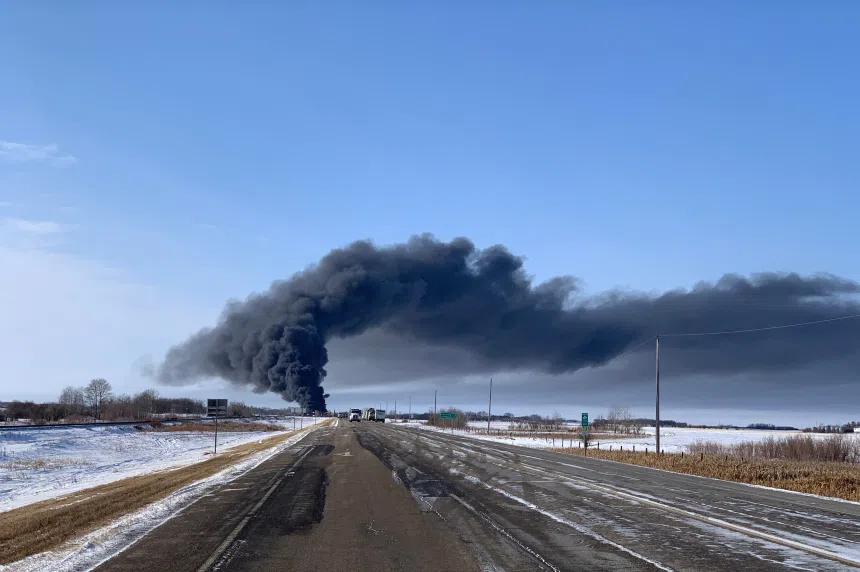Speed restrictions on trains carrying dangerous goods will be affecting Saskatoon drivers.
The new restrictions came into effect Friday following the second train derailment in nearly as many months by the small Saskatchewan community of Guernsey.
Trains carrying dangerous goods will now have to reduce their speeds to no more than 40 km/h if they have 20 or more cars. In cities, new limits of 32 km/h have been instituted.
These limits are active for 30 days, then the federal lawmakers could lengthen or shorten the slowdown.
In Saskatoon, the slowdown of trains will change the way traffic flows, especially in the downtown core.
Troy Davies, director of public affairs for Medavie Health Services said the change won’t necessarily affect them, as they have satellite bases across the city. He did express his concerns with trains crossing city limits.
“When you’re dealing with life-threatening situations, it’s always a concern for us,” Davies told 650 CKOM.
“Any time you have major trains coming through with oil (in) the major arteries of our city, it’s a huge concern and it’s not going to go away.”
In December, Saskatoon city staff said they approached both Canadian Pacific (CP) and Canadian National (CN) railways, proposing to share the rail lines on the outskirts of the city.
If accepted, the proposal would force CP to run on the CN rail line. A report issued by HDR consultants in 2018, estimated the cost of relocating the CP Rail mainline at $587 million.
Davies added that the drastic change that happened hours following the derailment is a cautious approach, focused on safety.
“Sometimes it takes something to happen in order to get (change). I think it’s a good thing because we can’t have rail cars flying through a city, but at the same time it’s going to cause a lot of stress on drivers,” he said.
“Any time you make one change on one end, you’re going to have reaction on the other end.”
Davies admitted that the change does open up the “opportunity” for emergency service delays.
As summer approaches Saskatoon, another aspect will slow traffic around the downtown core.
The second phase will begin on Saskatoon’s Sid Buckwold Bridge. When construction begins in April, two lanes of southbound traffic will be open and one lane moving northbound will remain open.
The Saskatoon Fire Department said the change in the rail line’s top speeds wouldn’t pose much of a problem for their emergency services.











